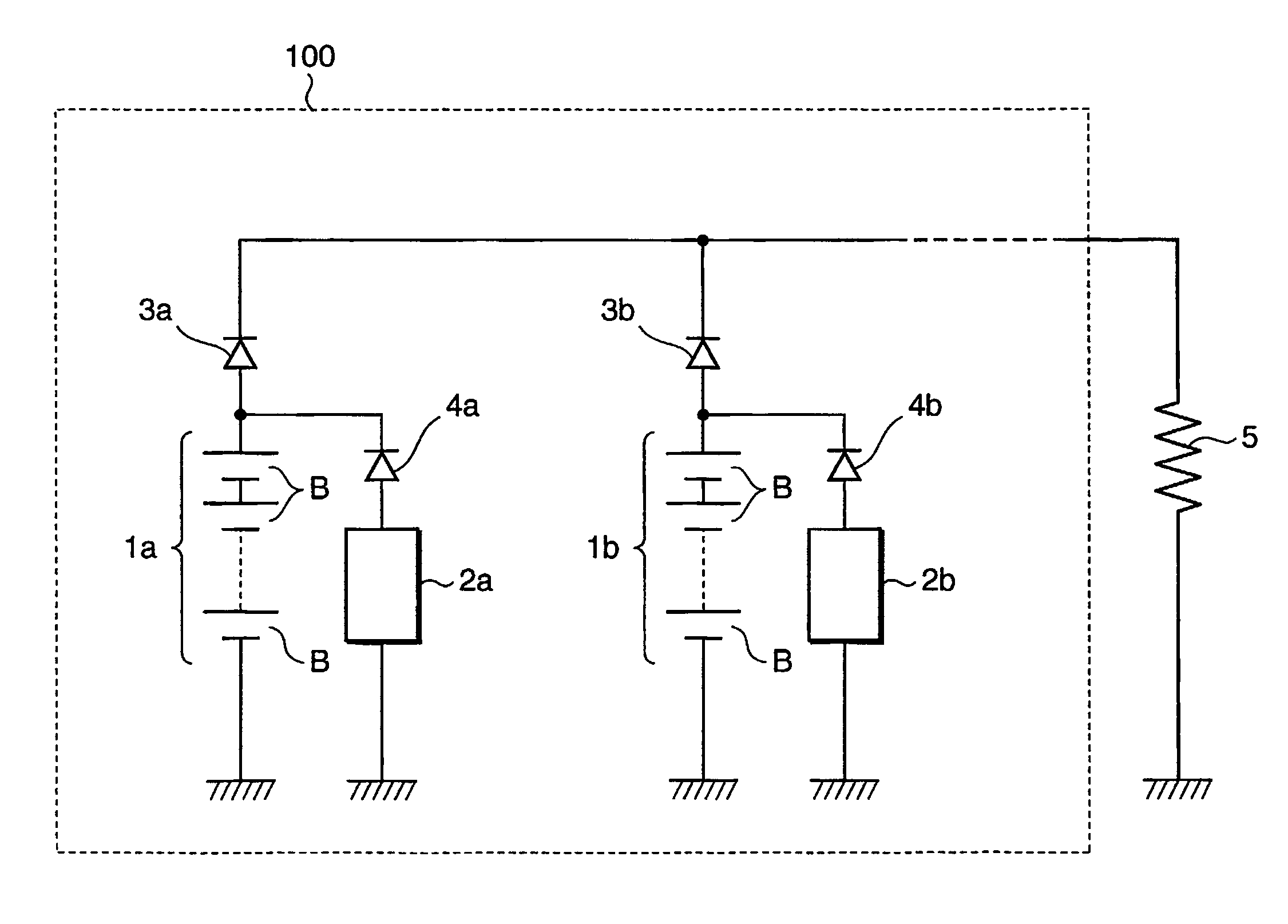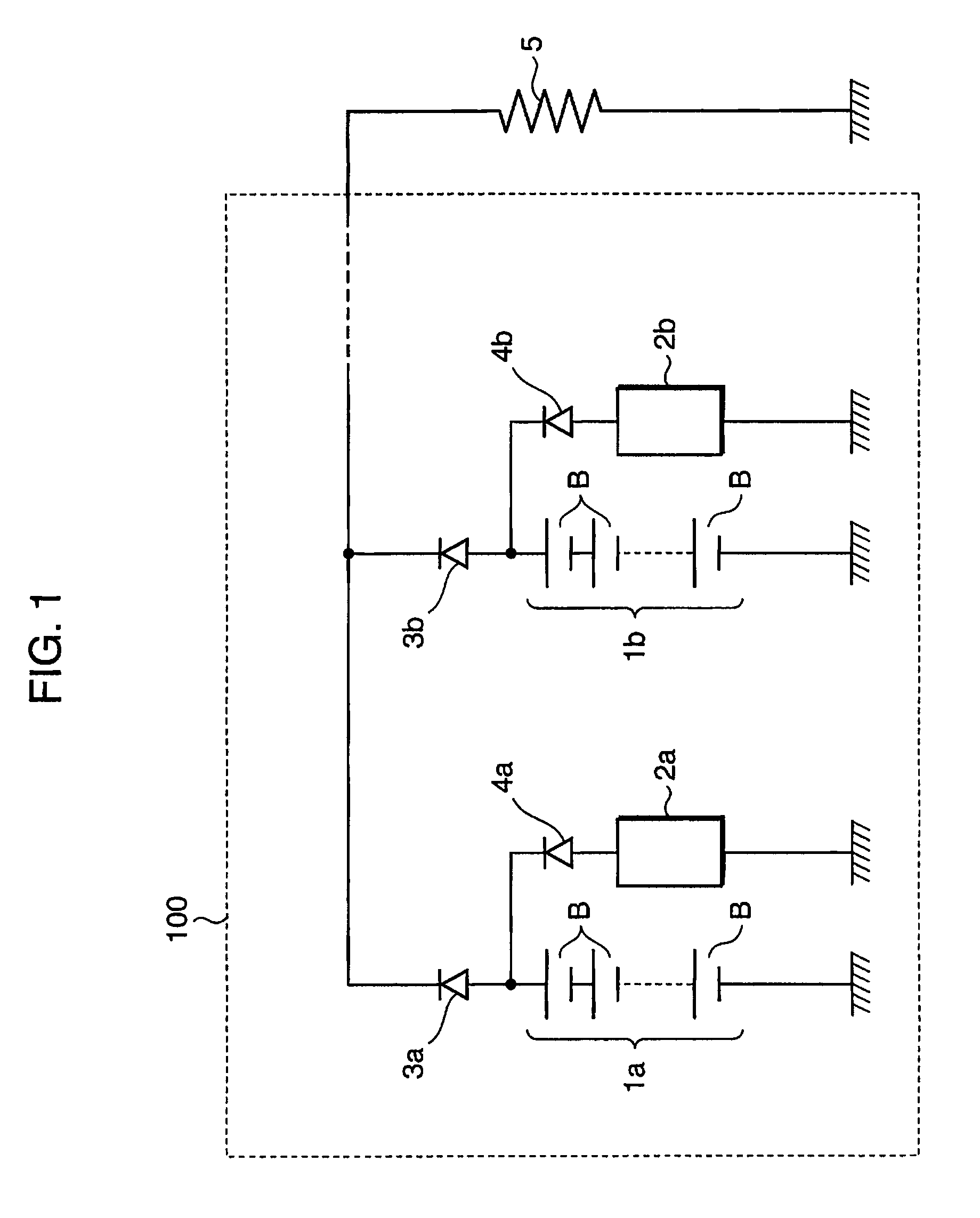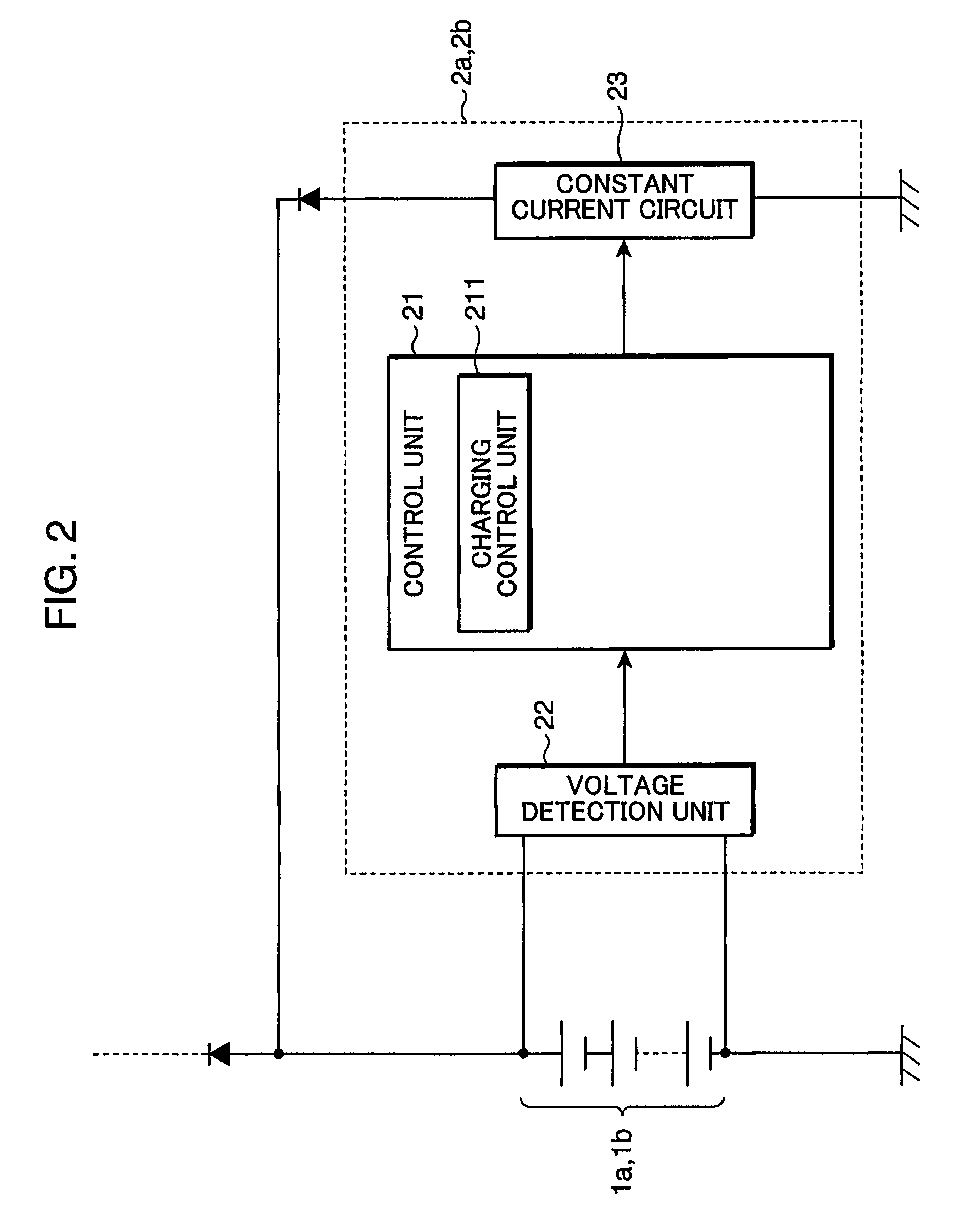Assembled battery charging method and battery charging system
a battery charging and battery charging technology, applied in the direction of battery arrangement, transportation and packaging, electrical generators, etc., can solve the problems of increasing the voltage of commercial power supplies, increasing the reactive resistance, and the valve-regulated type is more susceptible to internal resistance variation, so as to reduce the degree of stratification, the charging current value is reduced, and the charging time is longer.
- Summary
- Abstract
- Description
- Claims
- Application Information
AI Technical Summary
Benefits of technology
Problems solved by technology
Method used
Image
Examples
first embodiment
[0063]The assembled battery charging method and battery charging system according to a first embodiment of the present invention use an assembled battery charging method in which, for example, series circuits (secondary batteries), in which a plurality of valve-regulated lead-acid batteries are connected in series, are connected in parallel to a load. In this charging method, charging apparatuses are respectively connected to each series circuit, each charging apparatus detects the charging voltage of each series circuit, and n-stage constant-current charging is carried out in which constant-current charging is repeated a plurality of times by changing the current value n−1 times (where n is an integer of 2 or more).
[0064]FIG. 1 is a block diagram representing a first embodiment of a battery charging system to which the assembled battery charging method according to the present invention is applied. A battery charging system 100 shown in FIG. 1 is provided with secondary batteries 1...
second embodiment
[0091]An assembled battery charging method and battery charging system according to a second embodiment of the present invention sustains the final constant-current charging Cn for a prescribed supplemental charging time tn regardless of the terminal voltage V of a secondary battery.
[0092]During n-stage constant-current charging in which a current value is changed n times, since the nth constant current of the final nth stage of charging is frequently set to an extremely small value, changes in the voltage V of the secondary battery versus time are also extremely small. Consequently, there is increased susceptibility to the effects of noise in the vicinity of the charging cutoff voltage Ven, resulting in increased likelihood of error when determining the charging cutoff voltage according to voltage (determination of charging cutoff voltage by a comparison between the charging cutoff voltage Ven and the voltage V in Step S06 of FIG. 5). Therefore, by ending the finally executed const...
third embodiment
[0103]An assembled battery charging method and battery charging system according to a third embodiment of the present invention is an assembled battery charging method in which, for example, series circuits (secondary batteries), in which a plurality of valve-regulated lead-acid batteries are connected in series, are connected in parallel to a load, wherein charging apparatuses are respectively connected to each series circuit, each charging apparatus detects the charging voltage of each series circuit, and in carrying out n-stage constant-current charging in which constant-current charging is repeated a plurality of times by changing the current value n−1 times (where n is an integer of 2 or more), the amount of electricity charged in each series circuit is changed based on the thermal history of each series circuit.
[0104]According to this configuration, in consideration of the thermal history through which each series circuit has gone through (for example, the manner in which the ...
PUM
 Login to View More
Login to View More Abstract
Description
Claims
Application Information
 Login to View More
Login to View More - R&D
- Intellectual Property
- Life Sciences
- Materials
- Tech Scout
- Unparalleled Data Quality
- Higher Quality Content
- 60% Fewer Hallucinations
Browse by: Latest US Patents, China's latest patents, Technical Efficacy Thesaurus, Application Domain, Technology Topic, Popular Technical Reports.
© 2025 PatSnap. All rights reserved.Legal|Privacy policy|Modern Slavery Act Transparency Statement|Sitemap|About US| Contact US: help@patsnap.com



